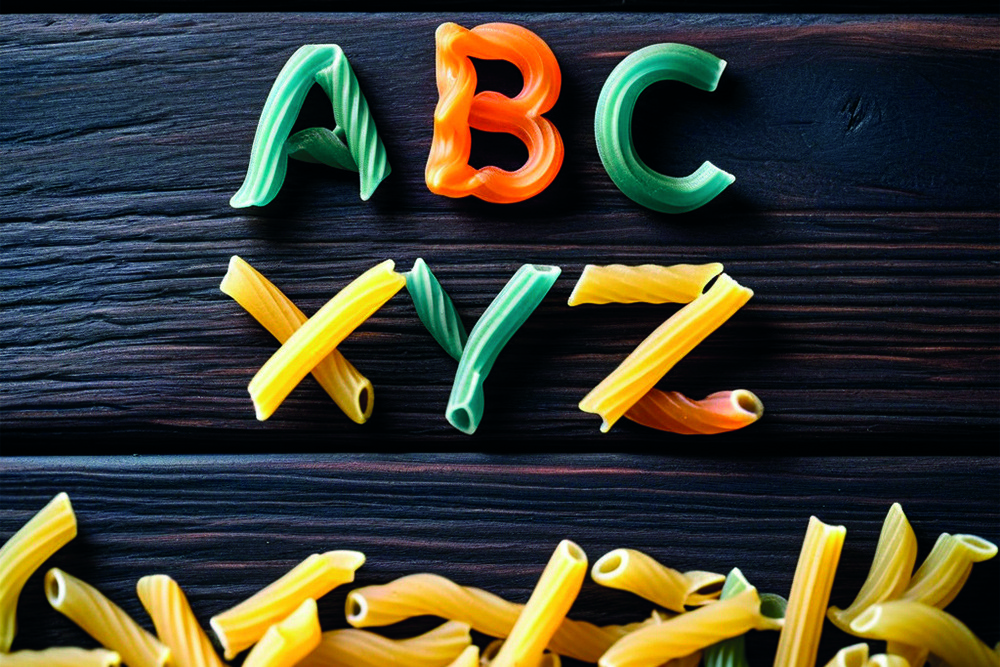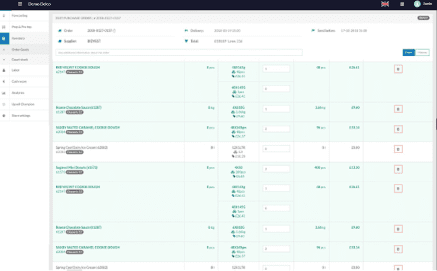With soaring costs and high inflation continuing to make their presence felt in the F&B sector, managing your margins is critical. Menu optimisation is a key part of this process.
In order to balance costs and ensure customer satisfaction, you need a comprehensive understanding of the demand, profit and revenue associated with every single dish. How? Through data collection and analysis.
Traditionally, operators have relied on spreadsheets, sales logs and cash register data to help formulate their strategies. But these approaches are no longer viable.
In such a volatile, highly competitive sector, efficient menu management requires a unified system that gathers metrics from all operational areas. This is where ABC and XYZ analysis comes in.
What is ABC Analysis?
ABC analysis is an inventory management model that categorises items based on their value to the business. Based on the 80/20 Pareto principle, which posts that 80% of sales can be assigned to 20% of products, all inventory items are organised into three categories: A, B, C.
Each letter represents sales volume, revenue and profit respectively. Thus for a restaurant owner, a best-selling dish with high revenue and profit would be designated as an AAA item. On the other hand, a poorly-selling one that doesn’t generate much revenue or profit would be assigned a CCC grading.

Beyond these simple classifications, the model allows you to glean deeper insights about specific menu items, so that you can make more subtle but meaningful adjustments.
Say for instance, that you’ve got a dish with an AAB score. While this may generate plenty of sales, the margins are marked as being low. Based on this classification, you can therefore decide to either lower the ingredient costs of the dish or increase the markup.
Then there are items with BAA, BAB and BBA designations. These dishes have low sales but the margins are high. Accordingly, you’d want to improve their visibility by making menu adjustments or running promotions to improve customer awareness.
The ABC method can be extremely helpful for restaurants looking to optimise their menus for profit, balance their stock levels and improve procurement strategies.
What is XYZ Analysis?
The XYZ approach categorises items based on their demand variability and predictability over a set period. As with the ABC method, menu items are organised in descending order.
Based on the coefficient of variation, these items are assigned a percentage. The higher the percentage, the more inconsistent the sales are. For instance, a dish with an X classification will have consistent demand, meaning that its coefficient ranges are low (0 – 10%). Those in the Y group typically have fluctuating sales volume with coefficients of 10-25%. Items in group Z have unpredictable demand, typically 25% plus.
The XYZ model can dramatically improve inventory and supplier management. For instance, the consistent demand for dishes in the X group means they can be bought in bulk. Those with moderate variability (Y) should be ordered less frequently which requires more careful stock planning. For Z items, the unpredictability of demand necessitates on-demand ordering.

When correctly applied, XYZ analysis helps restaurants to minimise food waste arising from overstocking and prevent stockouts. With a better understanding of demand, operators are also better placed to negotiate with suppliers.
An Overlooked Approach to Menu Management
You might have assumed that this powerful methodology was widely used across the food and beverage sector. But it’s actually not.
The collection and analysis of large amounts of data is a laborious, complicated process when conducted manually. It requires skilled personnel or, at the very least, staff that are capable of interpreting metrics.
Many owners just don’t have the resources, staff or will to put it into practice. It also doesn't help that for most restaurants POS software doesn’t include ABC/XYZ functionality.
Syrve is the exception to the rule.
ABC/XYZ Analysis with Syrve
In contrast to other restaurant management platforms, Syrve allows you to fully exploit the potential of ABC/XYZ analysis. You don’t need to be an analytics expert, you don’t need to sacrifice valuable resources on recruitment and you don’t need to spend time setting up elaborate processes.
Our next-gen platform automates the entire process, automatically collecting and monitoring critical metrics from multiple data points. The resulting data can then be easily accessed via Syrve’s reports panel. Let’s now go into more depth about how Syrve implements ABC/XYZ analysis.
Data Collection
This is where it all starts. Syrve collects data from your front-of-house POS system as the orders come in, keeping track of the sales volume and frequency of each menu item. Inventory levels, stock movements and supplier purchases are also continually monitored in real time.

ABC Categorisation
Using the data collected from the POS system, Syrve automatically categorises items according to their consumption rate and profit-making potential.
XYZ Categorisation
To assign XYZ classifications, our platform analyses historical sales data to gauge the demand variability of each menu item, also forecasting future demand patterns with the use of predictive analysis.
ABC/XYZ Reporting
Instead of relying on formula-laden spreadsheets, all the ABC/XYZ data you need is accessible via Syrve’s reports panel. From here, it’s easy to identify individual or grouped menu items and view the number of items within each classification. Histograms and graphs are also included to help you digest the data.
Menu Analysis and Recommendation Tool
An extremely powerful menu analysis tool also forms part of the package, providing three recommended actions for each menu item according to ABC/XYZ metrics: lower the cost, stimulate sales and remove from menu.
The Impact of ABC/XYZ Analysis on Your Restaurant
The use of ABC/ZYZ analysis can have far-reaching consequences for your restaurant, all of which are positive. Here’s how it can help in practice.
A More Profitable Menu
With the ability to identify best-selling and underperforming dishes, you’ll be able to fine-tune your menu. Items in high demand can be featured more prominently to maximize their profitability, while those that don’t sell can be removed altogether.
.jpg?width=636&height=424&name=syrve-graphs(1).jpg)
Optimised Stock Levels
By aligning inventory levels with item importance and demand trends, ABC/XYZ analysis helps optimise stock levels, preventing over/understocking and eliminating needless purchases.
Cost-Saving
Honing in on best sellers and removing underperforming dishes cuts ingredient costs and reduces wastage dramatically. In the long run, this is going to have a huge impact on your bottom line.
Happier Customers
You’re also going to have happier customers because you’ll be ensuring that popular, high-value dishes are constantly available, regardless of demand spikes.
Final Thoughts
To conclude, ABC/XYZ analysis, when implemented with Syrve, offers a comprehensive system for managing your restaurant’s inventory. Given that this powerful solution isn’t widely used in the F&B sector, you have the perfect opportunity to gain a significant advantage over your competitors.
Learn more about Syrve’s best-in-class menu management software.




